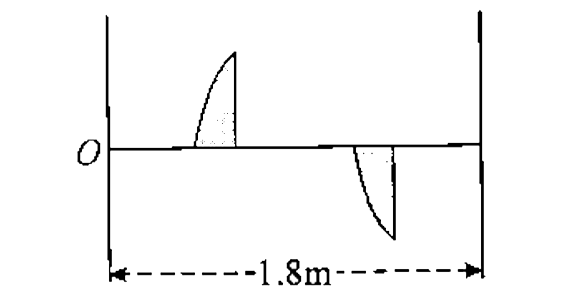In the figure shown, find the relative speed of a approach/ separation of the two final images formed after the light rays pass through the lens, at the moment when u = 30 cm . The speed of object = 4 cm/s . The two lens halves are placed symmetrically w.r.t. the moving object
_E01_157_Q01.png)
The correct Answer is:8/5 cm/s
Step by step video, text & image solution for In the figure shown, find the relative speed of a approach/ separation of the two final images formed after the light rays pass through the lens, at the moment when u = 30 cm . The speed of object = 4 cm/s . The two lens halves are placed symmetrically w.r.t. the moving object by Physics experts to help you in doubts & scoring excellent marks in Class 12 exams.
Updated on:21/07/2023Topper's Solved these Questions
- GEOMETRICAL OPTICSBOOK - MOTIONCHAPTER - GEOMETRICAL OPTICSEXERCISE - EXERCISE - 3 Level II (Section L - Power of lens and Mirror, Silverging of lens, Displacement Method)
3 Videos
- GEOMETRICAL OPTICSBOOK - MOTIONCHAPTER - GEOMETRICAL OPTICSEXERCISE - EXERCISE - 3 Level II (Section - M Chromatic Aberration and Achromatism, Optical Instrument + Eye + Luminous Intensity)
3 Videos
- GEOMETRICAL OPTICSBOOK - MOTIONCHAPTER - GEOMETRICAL OPTICSEXERCISE - Exercise 3 Level - II (Section J - Refraction from a Spherical Surface)
2 Videos
- FLUIDBOOK - MOTIONCHAPTER - FLUIDEXERCISE - Exercise-4 level-II
5 Videos
- GRAVITATIONBOOK - MOTIONCHAPTER - GRAVITATIONEXERCISE - Exercise - 4 Section - B Previous Years Problems
15 Videos
Similar Questions

If the distance between two images formed by upper and lower part of the lens of the point object placed at 30 cm from given lens is 11n (in cm) then find n:
View SolutionWhen an object is kept at a distance of 30cm from a concave mirror, the image is formed at a distance of 10 cm. if the object is moved with a speed of 9 cm/s, find the speed (in cm/s) with which image moves.
View Solution
Knowledge Check
Two particles P and Q are moving as shown in the figure. At this moment of time the angular speed of P w.r.t. Q is
 A5 rads−1B4 rads−1C2 rads−1D1 rads−1
A5 rads−1B4 rads−1C2 rads−1D1 rads−1Real image of an object are formed on the fromed on the two positions of a lens separated by a distance60cm
The Images in the two cases have sizes0.4cm and0.9cm.the size of the object will be :A0.36mB0.6cmC1.5cmD0.9cmFigure shown objectO.Final image I isformed after two refraction and one refraction is also shown in figure .Find the length of mirror.(in cm).
 A10B15C20D25
A10B15C20D25
The focal length of a convex lens is 15 cm, and an object initially placed at a distance 30 cm starts moving away from the lens at speed 2.5 cm/s. Find the speed of image in cm/s towards the lens at that very instant.
View SolutionFigure shows an object AB placed in front of two thin coaxial lenses 1 and 2 with focal lengths 24 cm and 9.0 cm, respectively. The object is 6.0 cm from the lens/and the lens separation is L=10cm. Where does the system of two lenses produce an image of the object AB?

View SolutionDistance between a fixed linear object and a fixed screen is 40cm .A thin convex lens of focal length 10cm is kept between object and screen such that object is perpendicular to the principal axis of lens as shown in figure.It is observed that for two different positions of lens images are formed on the screen.If size of images for the two different positions of lens are 9cm and 4cm then size of object in cm is......
View SolutionA thin plano-convex lens of focal length f is split into two halves. One of the halves is shifted along the optical axis as shown in figure. The separation between object and image planes is 1.8 m. The magnification of the image, formed by one of the ball lens is 2. Find the focal length of the lens and separation between the two halves. Draw the ray diagram for image formation.

View SolutionReal image of an object are formed on the fromed on the two positions of a lens separated by a distance60cm
The ratio between the sizes of the two image will be:
View Solution
